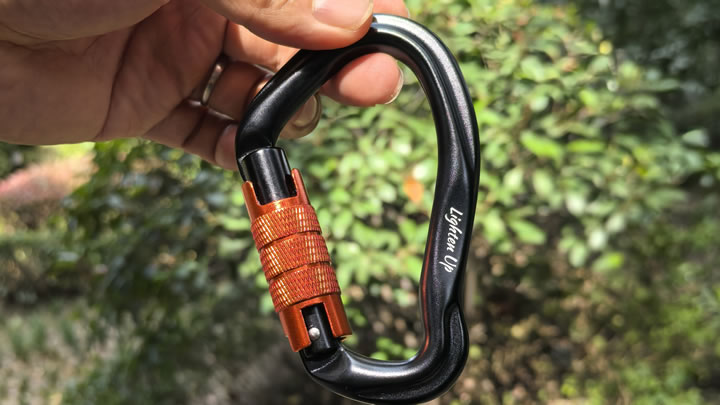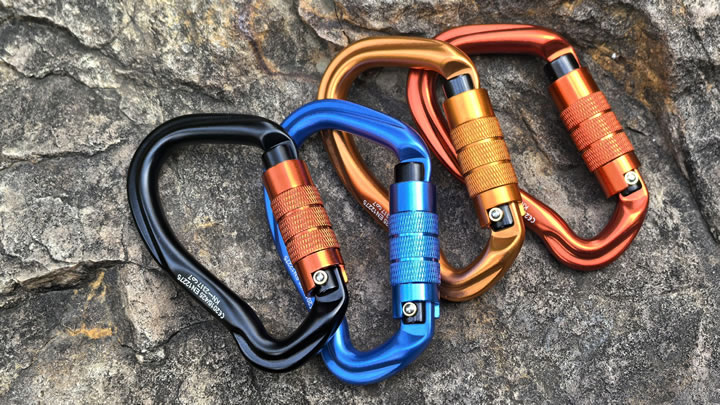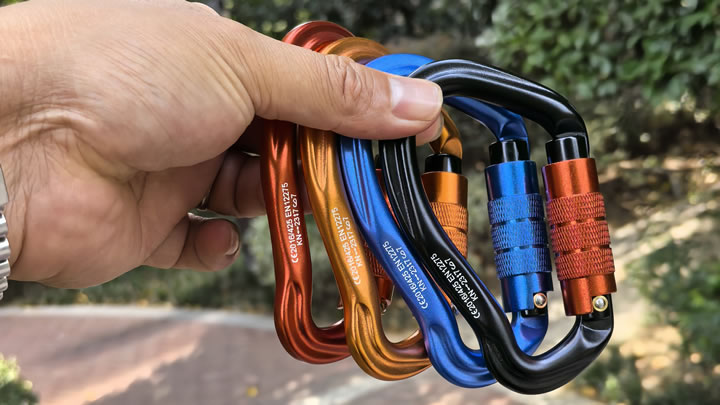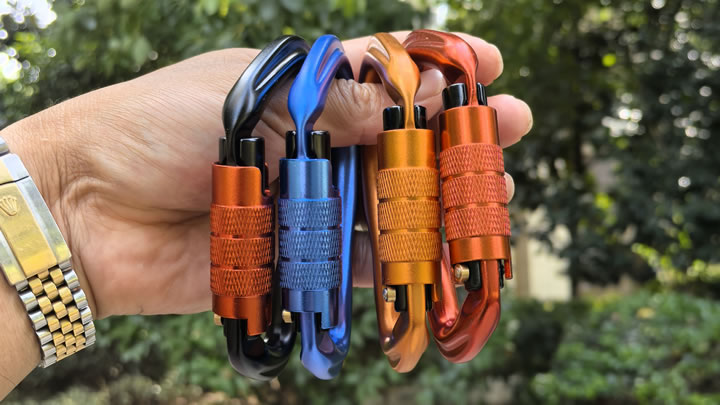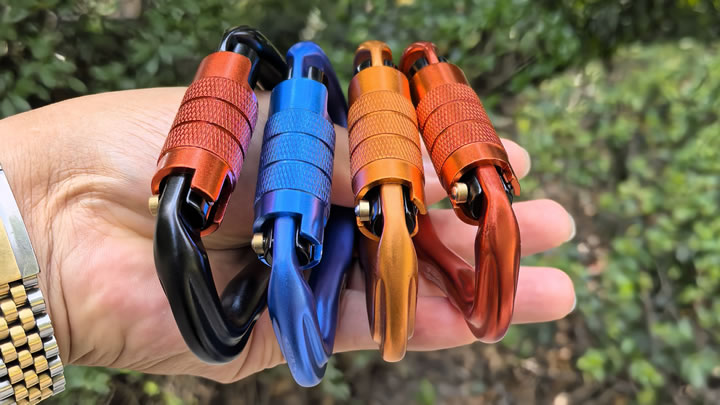Carabiner Hook Major Axis vs. Minor Axis Strength: A Critical Safety Guide
In the world of climbing and rigging, understanding your gear's limitations is as important as trusting its strength. Perhaps no single concept is more crucial to this understanding than the dramatic difference between a carabiner's major axis and minor axis strength. This isn't a minor technicality; it's a fundamental principle of safety that, when ignored, can lead to catastrophic equipment failure.
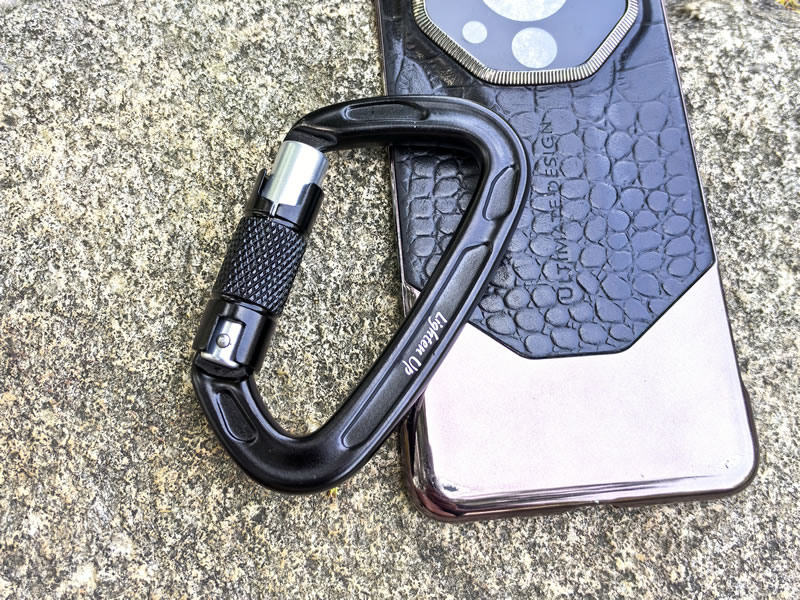
This guide will dissect these two strength ratings, explain the physics behind them, and demonstrate why proper loading is non-negotiable for your safety.
The Major Axis: The Path of Greatest Strength
The major axis refers to the carabiner's long, straight spine. When a load is applied along this axis with the gate closed, the carabiner is in its strongest possible configuration.
- The Rating: For a standard climbing carabiner, the major axis strength typically falls between 22 kN and 28 kN. To put that in perspective, 1 kN is roughly 225 lbs of force, meaning a 24 kN carabiner can theoretically withstand a force equivalent to about 5,400 lbs.
- The Engineering: This immense strength is due to the efficient distribution of force. The load pulls in tension along the spine, the carabiner's strongest and thickest component. The metal is designed to handle massive forces in this specific direction, and the gate's role is simply to keep the rope in the "basket," not to bear the primary load.
- The Intended Use: This is how a carabiner is designed to be used. Every time you clip a rope into a quickdraw or connect your belay device to your harness, the force should be directed along the major axis.
The Minor Axis: The Dangerous Weak Point
The minor axis refers to the carabiner's narrow width. When a load is applied across this axis, it is known as being "cross-loaded." In this position, the carabiner is dangerously weakened.
- The Rating: The minor axis strength is shockingly low, often rated around only 7 kN. This is less than a third of the strength of the same carabiner loaded on its major axis. This rating represents the force required to cause the spine and gate to bend inward and fail.
- The Engineering: In a cross-loaded scenario, the force is no longer pulling the carabiner in tension but is instead trying to bend it open. The geometry works against it, creating immense leverage on the spine and gate, which are not designed to resist this kind of bending moment. It's the difference between pulling on a rope (strong) and trying to bend a textbook open (weak).
- How It Happens: Cross-loading occurs in practice when a carabiner is twisted or improperly positioned, causing a sling or rope to press against both the spine and the gate simultaneously. A common example is a quickdraw that has twisted against the rock, forcing the carabiner into a cross-loaded position.
A Stark Comparison: The Numbers Don't Lie
The following table illustrates the dramatic difference in strength:
| Loading Scenario | Typical Strength Rating | Equivalent Force (approx.) | Implication |
|---|---|---|---|
| Major Axis (Ideal) | 24 kN | 5,400 lbs | The carabiner is used as designed and is at its strongest. |
| Minor Axis (Cross-Loaded) | 7 kN | 1,575 lbs | The carabiner is dangerously weakened and poses a severe risk. |
As you can see, a cross-loaded carabiner fails at a force that is well within the range that can be generated in a moderate leader fall.
The Real-World Safety Takeaway
Knowing the theory is one thing; applying it is another. Here’s how to ensure you always load your carabiners correctly:
- Visual Inspection is Key: Before weighting any connection, take a split second to look at the carabiner. Is the rope or sling sitting neatly in the basket, against the spine? Or is it pressing across the narrow width, touching both the spine and the gate?
- Use Quickdraws Correctly: When clipping a quickdraw, ensure the carabiner gates are oriented properly and the dogbone (the fabric sling) isn't forcing the carabiner into a cross-loaded position against the rock.
- Be Meticulous with Anchors: When building anchors with slings and carabiners, take extra care to ensure that all carabiners are free to align with the direction of pull and cannot be twisted into a cross-loaded state.
- Understand the System's Weakest Link: Your entire safety system is a chain. The strength of a carabiner loaded on its major axis is rarely the weak link. However, that same carabiner, when cross-loaded, instantly becomes the most likely point of failure.
Conclusion: Strength is a Matter of Direction
The disparity between major and minor axis strength is the single most important lesson in carabiner mechanics. It teaches us that a carabiner's safety is not just about the number stamped on its spine, but about how that force is applied. The high kN rating on the major axis is your safety margin for dynamic falls. The low rating on the minor axis is a stark warning against complacency.
By developing a vigilant habit of checking your carabiners for proper orientation, you move from simply using gear to truly understanding it. This knowledge transforms your practice, ensuring that the strength you rely on is the strength you actually get.

